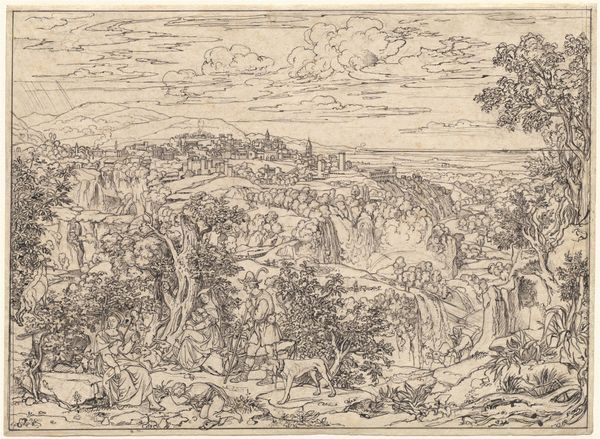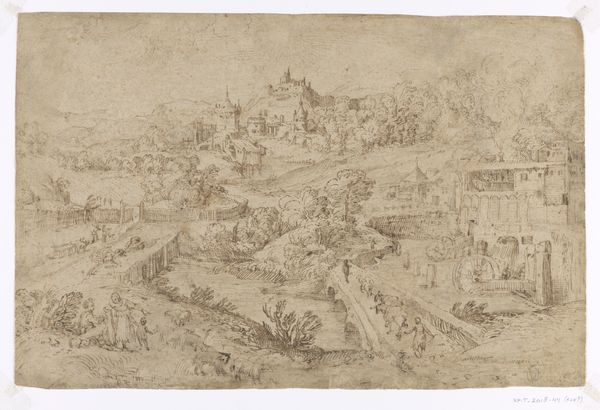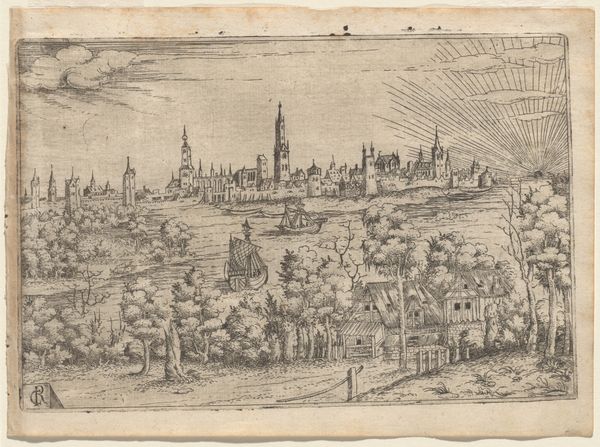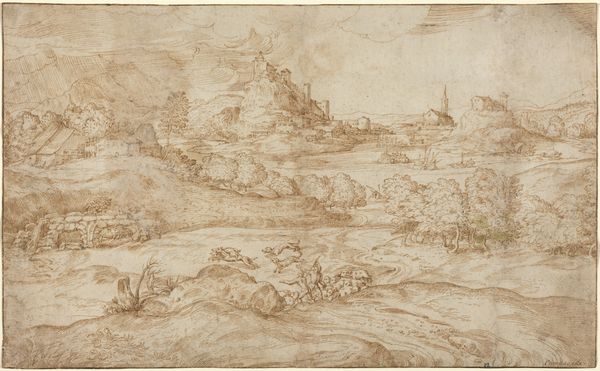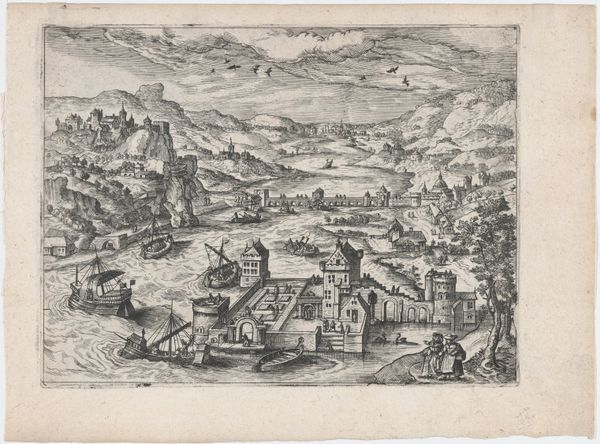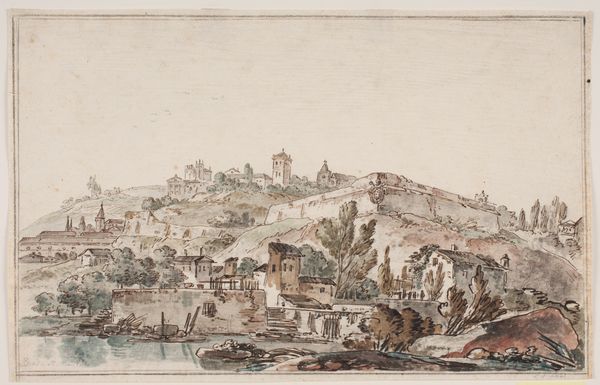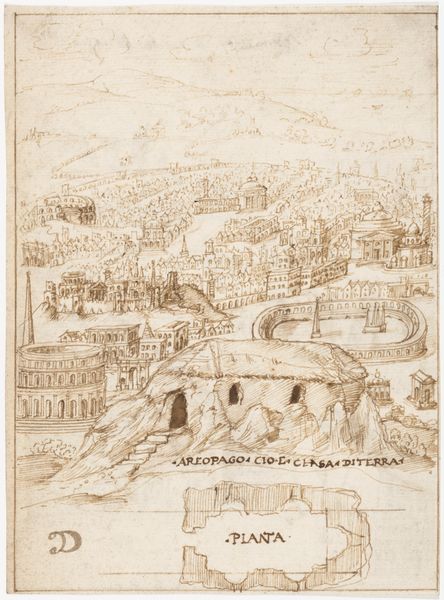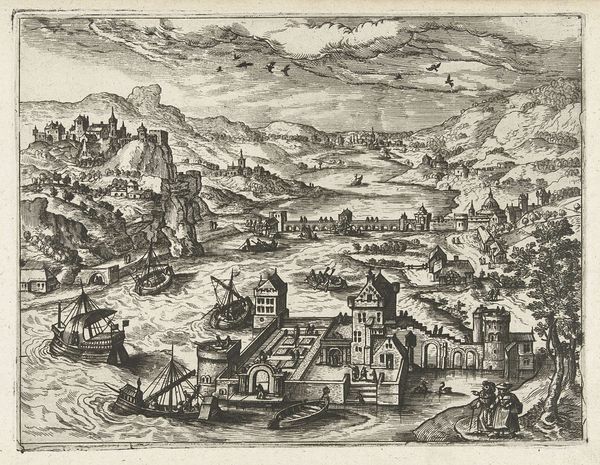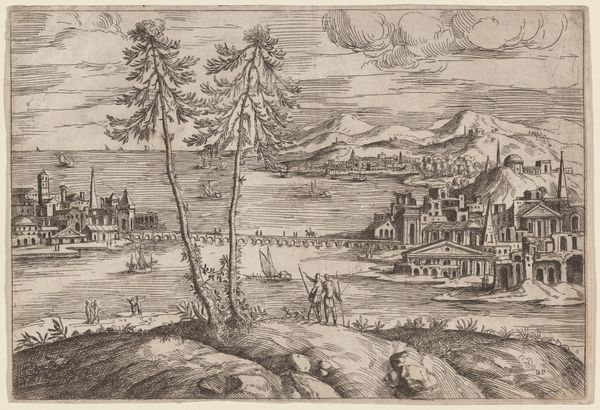
drawing, etching, paper, ink
#
drawing
#
etching
#
landscape
#
etching
#
figuration
#
paper
#
ink
#
cityscape
#
watercolor
Dimensions: Overall (approximate): 25.2 x 39.2 cm (9 15/16 x 15 7/16 in.) support: 35.2 x 49.5 cm (13 7/8 x 19 1/2 in.)
Copyright: National Gallery of Art: CC0 1.0
Curator: Tobias Verhaecht brings us "River Landscape," rendered in ink and etching on paper. The image teems with life; let's dive in. Editor: My first impression is of miniaturization, of a vast world distilled into this small frame. The artist's technique of rendering such depth with these delicate lines feels incredibly impressive. Curator: Absolutely, the composition invites your eye to wander. The way Verhaecht uses linear perspective draws us from the foreground figures and bridge into the distant cityscape, nestled amongst dramatic mountains. Think of how such landscapes gained popularity; viewers prized paintings that captured the natural world, shaped by trade and burgeoning urban centers. Editor: The imagery speaks to the connection between humanity and nature. Observe the tiny figures, some crossing the bridge on horseback, others in boats or wading through the water. Each detail, like the presence of dogs, infuses the landscape with vitality, revealing the symbiosis between human life, labor, and natural resources. The river as a motif also suggests movement, passage, and transition, ideas frequently associated with personal journeys, but also trade. Curator: Good points. This wasn't some untouched wilderness he presented. Landscapes reflected contemporary European desires to catalogue, control, and yes, trade. This piece encapsulates a romantic yet practical view of nature, enabling exploration and commercial endeavors. Its artistic merit resides precisely in reflecting that tension. Editor: Do you notice the distinct lack of any specific reference? We cannot clearly associate it with any known place. This "ideal landscape," a collection of different landscapes put together into a composition creates the symbolic idea of trade happening at any time, in every place. Curator: You've really pinpointed a vital component there! The landscape tradition provided not only visual pleasure but an affirmation of contemporary political and economic viewpoints. This is not mere picturesque scenery, it encapsulates the era’s perception of space. Editor: It's amazing how this small etching can reflect such broad cultural viewpoints. Examining visual clues lets us re-live how previous generations perceived their world, capturing emotions connected with nature, urbanization, and even social progress. Curator: In observing this, the power lies in how it captured societal concepts of what they value at that time. From landscapes, we interpret much more than pure depictions. Editor: Exactly. Through the universal language of archetypes, such renderings stay as relevant historical, artistic and philosophical achievements.
Comments
No comments
Be the first to comment and join the conversation on the ultimate creative platform.
